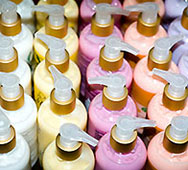The modernization of professional facilities, wider offerings of treatments appealing to consumers of different ages and genders, and increased marketing efforts contributed to the healthy growth of the professional skin care market in both the United States and Europe in 2011.
There are many changes happening in the professional arena, with the retailing landscape standing out.
With professional outlets traditionally focusing on the main service component of their business, a more strategic approach to other components, including retail sales of professional skin care products, has emerged as new priority to increase sales and profitability within these outlets.
Sales within mature and the largest professional skin care purchase channel in the United States – Spas and salons – account for slightly less than 50% of the market sales in 2011. Sales declined for this channel as it continues to be reshaped in the face of an uncertain economy. The commercial demand placed on manufacturers entrenched in this channel has grown significantly as spas continue to reduce the number of brands carried and increased their expectations from their suppliers. These venues seek customized offers, support and training, and particularly more aggressive sell-in promotional activities. Manufacturers are responding by providing more help to larger accounts thereby neglecting smaller ones.
By contrast, sales of the largest purchase channel in Europe – Beauty institutes and salons – accounting for almost 60% of the professional skin care market, increase by 3.7% in 2011. This gain stems from a slight improvement in retail skin care product sales, as well as an increase in rebooking of higher priced services. Continued consumer interest in professional skin care products and treatments, which are increasingly becoming more effective in delivering the promised results contributes to the novel approaches. A universal and noteworthy trend is that consumers have become more discerning and demand better and more visible results.
Europe’s second most important channel, the spas channel, registers highly positive growth in 2011. Spas are still a fairly young concept in Europe and are still evolving as the number of day/urban spas continues to grow. Large manufacturers, such as Clarins, are investing in opening their own branded spas, as well as focusing on the “well-being” market, offering a variety of treatments to cater for different customers and their needs.
Furthermore, the stress level in Europe is growing. Europeans used to have “lighter” weekly working hours, in comparison to the U.S. population, but this is changing. Responding to the economical situation, companies want to “get back on track” and are pushing its employees more; consequently, people are searching for new forms, such as spas, to relax from increasing stress.
From our recent interviews with manufacturers, we also found that although growth is encouragingly steady in Europe, much more attention will be devoted to the Russian and Brazilian markets in 2012. Indeed, manufacturers are more likely to double their efforts within these two countries.
Industry executives participating in our research this year were concerned with finding the correct balance of distribution between purchase channels. Another concern was with consumers curtailing expenditures on non-essential treatments in the face of an uncertain economic future. Kline’s Professional Skin Care 2011 Global Series examines these concerns and how they shape the U.S. and European markets, now and in the future. This report series will also bring micro-regional coverage in the upcoming South Korea volume.
Authors:
Pierrick Dutton, Senior Analyst
Sabrina Hadek, Analyst

